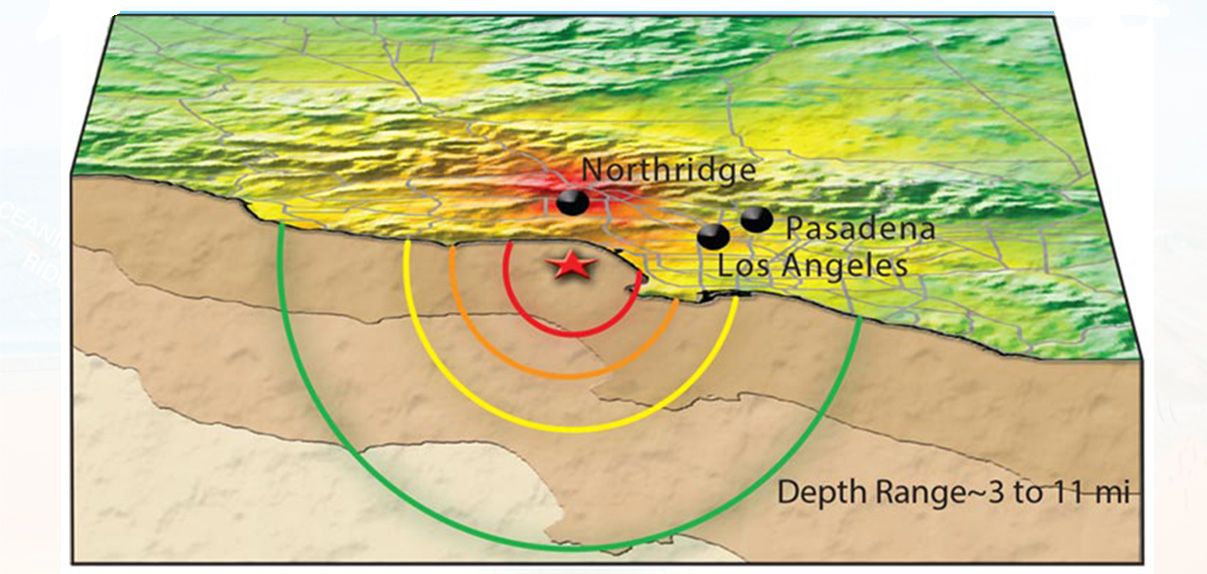The earthquake alert and the tsunami warnings of December 5th
We only got one right. We can do better.
June 16, 2025

Thursday, December 5th, 2024, 10:44 a.m. Pacific. Berkeley Seismology Lab PhD students, myself included, are working in our office in McCone Hall, high up on the north side of the UC Berkeley campus. Suddenly, our phones are shouting at us: “Earthquake. Drop, Cover, Hold On.” We get under our desks. A minute and a half later, some of us feel very light shaking. 5 minutes later, our phones buzz loudly, an unequivocal message on our screens: “TSUNAMI WARNING. You are in danger.”
Millions of Bay Area residents got the same message. Stories of sheer confusion flowed in; children in daycare evacuated to the roof of a parking lot. People scrambled to understand whether or not to evacuate. In the end, there was no tsunami. Waves barely exceeded 2 inches. December 5th had it all: shaking felt in the Bay, an earthquake early warning alert, a confusing tsunami warning that should not have been sent, and a lot of lessons to learn.
A large earthquake had indeed occurred some 40 miles offshore the town of Petrolia, in Humboldt county. At magnitude 7, it was northern California’s largest earthquake since the 1990s. Just like it was designed to do, California’s state-level earthquake early warning system rapidly detected the earthquake, and warned of the impending shaking.
In some cases, large offshore earthquakes have the potential to generate a tsunami. Tsunami warnings are the domain of the National Weather Service (NWS). The NWS tsunami warning center serving the Pacific coastline of the United States also detected the earthquake and issued a warning to a stretch of coastline from Santa Cruz, California, to central Oregon.This warning was canceled over an hour later. No tsunami had been observed. What made the two warnings so different in their success?
Understanding earthquake early warning systems
Earthquake early warning systems aim to warn individual users and automated systems (like BART) of impending ground shaking, so that they can take protective action. California’s earthquake early warning system, ShakeAlert, has been sending public warnings since 2019. (See ‘Shaking Expected’, BSR Spring 2021, for a detailed explanation of how these alerts are issued). Seconds matter in earthquake early warning. The system can alert users before the shaking gets to them, because the waves that carry strong shaking travel a lot slower than the alerts, which travel at the speed of light. Therefore, the limiting factor in system efficacy is how quickly and accurately the system can detect and characterize an earthquake. On December 5th, the system detected the earthquake 13 seconds after it started, estimated a location within 20 miles of the true one, and estimated the magnitude at 6.9. 5 seconds later, Berkeley was forecast to experience light shaking. Delivery systems like UC Berkeley’s MyShake app sent warnings to users’ phones. Those close to the earthquake experienced severe shaking and got a few seconds of warning; the Bay had a minute and a half to prepare before light shaking was felt.
Everywhere, the message was clear: Drop, Cover, Hold On. This choice of clarity was informed by extensive social science research done long before the system became publicly available. We know for a fact that people are most likely to take action on messages that are short and clear. We know for a fact that information overload does not help. Count this double when people need to act within seconds.
Tsunami warnings: a stark contrast
Tsunami warning is a different game. After a large offshore earthquake, the question is whether a tsunami is possible, and which area could face hazardous waves and flooding if one does happen. Tsunami warnings urge those in danger to head to higher ground. Under NWS protocol, these warnings are issued to anyone who could experience tsunami wave heights of 3 ft or more.
The NWS uses a simple, fast rule to decide who to alert: as soon as an earthquake of a particular magnitude is confirmed, all residents along a predefined length of coastline are alerted. On December 5th, based on an initial estimate of magnitude 7, millions of people within 300 kilometers of the epicenter were told they were in danger.
Some people received multiple, often conflicting, messages about the danger they were in, which caused great confusion. Unlike earthquake early warnings, which arrive in a few seconds with the same message, tsunami warnings trickle in slowly from many different sources. NWS sends warnings to phones via the Federal Emergency Management Agency’s Wireless Emergency Alerts (WEA) system. However, the warning also funnels down to state and local authorities, which are free to send their own messages. The City of Berkeley, following past state guidance, issued an evacuation order, which reached students on campus via UC Berkeley WarnMe.
Not all cities made the same decision. Residents of the nearby low-lying island of Alameda did not get any such order. Local radio stations heard from listeners frantically trying to look up information to make their own stay-or-go decisions. Hardly the clear message people needed.
Preparing for the real deal: how to build a more robust tsunami warning system
The tsunami warnings should have never been issued to the Bay in the first place. The December 5th earthquake was certainly big enough to cause a deadly tsunami. However, to create a tsunami an earthquake must displace a significant amount of water by moving the seafloor vertically. We can determine the type of earthquake and assess its ability to generate a tsunami within a few minutes.
Data from the same seismic sensors that support the earthquake early warning system showed the earthquake involved horizontal, not vertical, motion. Buoys deployed to observe tsunamis in the open ocean detected disturbances that barely exceeded an inch.
For the region nearest the earthquake, an immediate warning made sense. If there was a big tsunami, damaging waves could have reached Humboldt coastline within 10 minutes, so waiting for tsunami confirmation would have been too late.
For far away areas though, we can afford to wait for more information. Tsunamis travel much slower than seismic waves. Tsunami waves would have taken an hour and a half to reach the East Bay. The penalty of getting 10 minutes less warning could have saved Bay residents from the disruption, confusion and fear caused by unnecessary evacuation orders.
Many locals questioned the evacuation order. The East Bay is protected by San Francisco and the Peninsula; how could a tsunami damage Berkeley or Oakland? Just north of the fault that broke on December 5th lies the Cascadia subduction zone, where the Pacific plate dives under North America. Cascadia is capable of producing a magnitude 9 earthquake, releasing 1,000 times the energy of the one from December 5th. The tsunami from such an event would almost certainly send damaging waves into the Bay. Tsunamis created by the similarly sized but more distant 1964 Alaska and 2011 Tohoku, Japan earthquakes travelled under the Golden Gate Bridge and caused damage to boats in Marin and Emeryville.
State and federal authorities have mapped tsunami hazard zones across the entire West Coast. These are areas in which there is a chance of flooding due to a tsunami over a human lifespan. In Berkeley, this zone extends only as far inland as 4th Street (see tsunami risks here). Under a tsunami warning, this is the zone that is supposed to get evacuated. If we know which areas are in danger of flooding, why did people much farther inland, including those high up in the Berkeley Hills, still receive alerts? The NWS uses coarse zones to issue both weather forecasts and tsunami warnings. If your weather forecast zone touches a coastline within the distance covered by a warning, no matter how far inland you are, you will be alerted of an impending tsunami.
The NWS’s coarse zones and untargeted alerts are blunt tools that decrease the impact of crucial tsunami warnings. The current implementation of tsunami warnings on the West Coast does little justice to our scientific capabilities. Earthquake early warning delivery mechanisms like the MyShake app are capable of alerting only those who are expected to feel shaking, with a precision of a few miles. UC Berkeley researchers have already shown it is possible to use the exact same process to precisely target tsunami warnings. We need to implement this immediately. Secondly, tsunamis, unlike earthquakes, allow us the time to be sure there is a danger before alerting those who may be affected. Crying wolf in an area where there could be a tsunami in the future is not sensible. Lastly, we know from earthquake warning systems: the simpler the better. A single message, from a single source, targeting only to those who really need it, could make the difference. We have the technology to implement all of this; it is time we started to use it.
Image credit: EarthScope Consortium under CC BY 4.0. Link: https://www.iris.edu/hq/inclass/sequences/earthquake_magnitude_and_intensity




